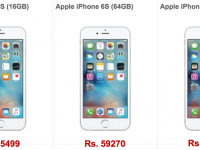
As we got an exclusive hands-on on yet another low-cost tablet (the iBall Slide), there were two rather contrary sentiments running through my ever so ‘humble mind. The first, rather obviously, was one of happiness that the market had yet another tablet that did not cost the earth (the iBall Slide costs around Rs 13,990, which is about the cost of a netbook). The second, however, was one of curiosity. For, while the iBall Slider was the third low-cost tablet to hit the Indian market in recent times, coming on the heels of the Reliance 3G Tab and the Beetel Magiq, it also signaled a trend that I found strange – the fact that none of the “biggie” brands in the tablet business were trying to even reach the mainstream Indian user. Which is rather strange if you consider what happened in the smartphone market
If you remember, smartphones went mainstream, not because of low cost handsets from smaller brands but the value for money products from the bigger brands. Nokia, Samsung, LG, Sony Ericsson, Motorola, RIM, and HTC today all have smartphones that cost less than Rs 10,000 and yet deliver a superior experience (if you have any doubts, just Annkur started about his Nokia E63 – a true budget smartphone if there was one). And yet that does not seem to be happening in the tablet market, where the lowest priced tablets from “big” brands are the original Samsung Galaxy Tab and (surprise, surprise) the first Apple iPad, both of which still cost much more than the humble Reliance 3G Tab.
What’s worse is that none of the leading brands seem too interested in coming out with a relatively low cost tablet either – you would be hard pressed to find a recent tablet from the likes of Apple, Asus, Acer, Samsung or Motorola coming for less than Rs 25,000. Which is a bit strange – you would have thought that these companies would try to take a chunk out of the “value for money” market, where the real volumes for most tech products lie. And it is not as if any of these worthies is making a killing at the higher end – most of the high-end tablets released in the country have come a cropper, rejected by an audience that still wonders what role tablets have in their lives and which tends to compare high end tablets with notebooks – and with excellent reason, because they cost around the same!
All of which begs the question – what is keeping the leading brands away from the budget tablet business? I refuse to believe that it is a lack of ability, given the resources at their disposal. At the cost, of sounding like a Leftie, I must confess that I am beginning to think that it is greed – greed to try and get the cream of a new market rather than reaching its main body. Hence the high specifications, the sleek designs and the huge ad campaigns – all of which contribute to a really stiff price tag. One can understand an Apple wanting to stick to relatively high specs given the company’s stress on user experience, but what is stopping a Samsung, Asus or an Acer from coming out with a tablet that costs in the vicinity of Rs 15,000? Not All users crave a dual core processor, stacks of memory, large display or cameras with high megapixel counts.
Not all of them want the latest version of the OS in all its glory. Heck, most people just want a device which will reliably check their mails and social networks, and let them browse the Net on the move. And you do not need a pocket powerhouse to do that. A large number of people are steering clear of tablets not because they do not like them but simply because the ones they do like cost the earth.
I also refuse to buy the argument that tablets are a “luxury and lifestyle product” – geez, they were saying the same thing about smartphones, weren’t they? Why on earth would someone NOT want to use a product that will provide them easy access to the Internet and stacks of attractive applications? A lot of Indians still invest in netbooks, purely for the convenience and the fact that they are so affordable. Why would they not invest in similarly priced tablets, if they are intelligently marketed?
When will the leading brands realize this? I actually have no idea. But I am hoping it is soon. For, unlike a number of cynics, I do think tablets have a place in the life of the mainstream tech user – they are easier to use than netbooks, lighter, are always connected, and generally have better battery life.
And well, laugh at me, but I feel that one day in the future, they will replace notebooks and netbooks as our preferred mobile computing device. But for that to happen, the popular names have to get it into their skulls that there’s a market for tablets in the Indian middle-class, and not just in the upper echelons of Indian society. And then come out with tablets that are much more affordable and which deliver decent, if not exceptional, performance. Not everyone wants a powerhouse. Not everyone can afford one either.
But until they realize that, the likes of Reliance and iBall have a chance to make hay. And considerable luck to them, I say. For, they are attempting to serve a market that the giants seem bent on ignoring for the moment. And which, ironically, is much bigger than the one the leading brands are catering to.





